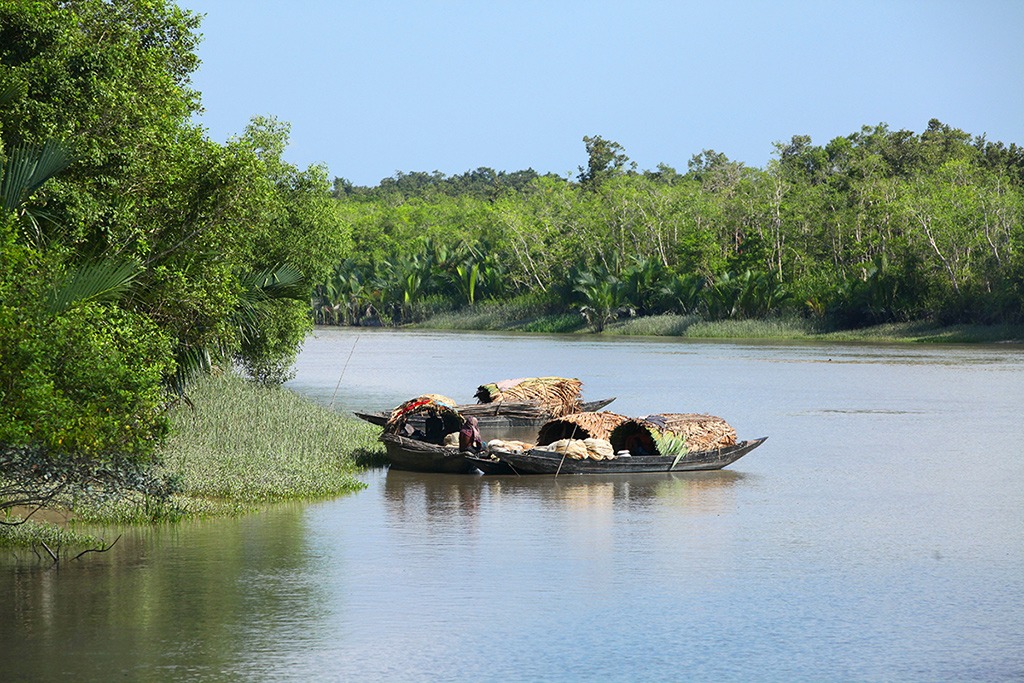
Published :
Updated :

The Sundarbans is expected to shield Bangladesh from another storm by taking the first impact of Cyclone Remal, which is likely to target the coasts with a wind speed of up to 120kph.
Sidr, Aila, Bulbul, Amphan, and Yaas are some of the storms in recent years blocked by the mangrove forest with an area of 6,000 square kilometres on the Bangladesh side.
Although the Sundarbans is not in the middle of the latest storm Remal’s likely path, a large portion of the cyclone is expected to be over the forest while making landfall around 10pm on Sunday.
Meteorologists say the storm will cross the coasts somewhere between Khepupara in Bangladesh’s Patuakhali and India’s Sagardwip island.
It is likely to lash the coasts for hours at least until midnight.
Md Azizur Rahman, director of Bangladesh Meteorological Department, said Barishal and Patukhali will be on one side of the centre of the storm with a diameter of 400 kilometres, while the Sundarbans will be on the other side.
He thinks the areas near the Sundarbans will face less damage than Barishal and Patuakhali because of the trees in the forest.
Samarendra Karmakar, a former director of the department, said he had heard the storm would affect a vast area of the Sundarbans, including Hiron Point.
“Like all the time, the Sundarbans will work like a shield. There may be storm surge and damage to crops,” he said.
He also believes that Remal would not be a very strong cycline since it got a short time to gather strength.
SUNDARBANS, A SHIELD AGAIN
When Cyclone Sidr lashed the coasts in November 2007 with a wind speed of up to 260kph, around 3,500 people died, but many others were saved because of the Sundarbans, which suffered extensive damage.
The mangrove forest shielded Bangladesh again in 2019 and 2021 when cyclones Bulbul and Yaas claimed 24 and seven lives respectively.
In November 2023, Cyclone Midhili damaged trees and crops, besides killing nine people. It crossed the coasts near Khepupara.
The Sundarbans will take the hit again this time.
Mihir Kumar Doe, conservator of forests in Khulna region, said they took preparations for the safety of people in the area.
“But the storm is a threat to the biodiversity of the forest. We’re aware of what needs to be done before and after the storm,” he said.
Mohan Kumar Das, executive director of National Oceanographic and Maritime Institute, says that infrastructure built by destroying the forest and a recent blaze that burnt trees have lessened the Sundarbans’ capacity to shield human habitats from the storm.
“We must do our job without affecting nature,” he said.
Professor AKM Saiful Islam of Bangladesh University of Engineering and Technology’s water and flood management institute thinks the warming sea helps storms gather strength in this side of the Bay of Bengal.
“It can’t be confirmed without research, but the last storms blew past this area and the cyclones are forming very fast. The Sundarbans is also suffering extensive damage,” he said.
“If the wind and storm surge hit [human habitats along the coasts] directly, there would be more damage,” Prof Saiful said.
The expert believes the government has much work to save the Sundarbans and create more forests along the coasts
“It’s not that the Sundarbans will always be the saviour. Besides shielding from storms, surge and rains, the forests will absorb carbon dioxide and emit more oxygen,” he said.


 For all latest news, follow The Financial Express Google News channel.
For all latest news, follow The Financial Express Google News channel.